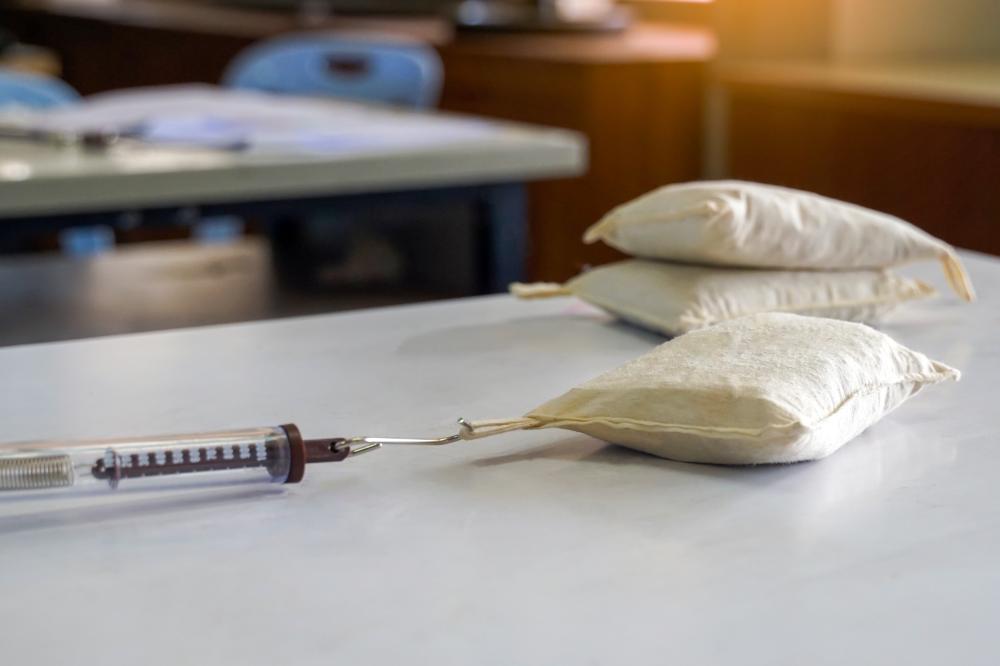
Effective Approaches to Heroin Addiction Treatment
At Solace Hills, our extensive experience in treating heroin addiction has led us to develop a multifaceted approach. Heroin Addiction Treatment requires a blend of behavioral therapies and medication-assisted treatments. Our certified professionals employ cognitive-behavioral therapy, which has proven effective in altering patients’ attitudes and behaviors related to drug use while equipping them with constructive life skills.
Pharmacological treatments complement this approach by utilizing medications like methadone, buprenorphine, and naltrexone. These medications alleviate withdrawal symptoms and cravings, facilitating smoother transitions to sobriety. But beyond the scientific, every individual must be treated as just that–an individual, each with unique challenges and needs.
Integrating Medication with Therapy in Heroin Addiction Treatment
Our commitment at Solace Hills is to seamlessly integrate medication-assisted treatment with behavioral therapies. Experience tells us that this combined strategy enhances treatment adherence and long-term success rates. Medications like methadone and buprenorphine serve to stabilize brain chemistry and suppress withdrawal symptoms, while therapy sessions focus on psychological and emotional healing.
This dual approach ensures that treatment addresses both physical dependencies and mental health needs, creating a holistic approach that few other Heroin Addiction Treatment modalities can offer. We strive to make every step of the recovery journey as supportive and accessible as possible.
The Importance of Personal Insight in Heroin Addiction Treatment
As someone who’s dedicated over two decades to helping individuals break free from the shackles of addiction, I understand the profound impact of integrating personal insights with professional expertise. At Solace Hills, we share stories and experiences from previous clients, offering hope and encouragement. This human touch, sometimes overlooked in clinical settings, is vital for trust-building and recovery motivation.
Encounters with former clients remind us continually of the small victories that accumulate to create lasting change. For example, I recall a young man who, after time in detox, finally expressed dreams outside his addiction–a job, a family, a life. These transformations fuel our dedication and affirm the importance of personalized care.
What Qualifies as a Heroin Addiction Treatment Emergency?
A Heroin Addiction Treatment emergency typically involves severe withdrawal symptoms or potential overdose situations requiring immediate medical attention. Recognizing the signs–such as intense cravings, severe agitation, or respiratory distress–is crucial.
When faced with an emergency, the following steps are crucial:
- Contact emergency services immediately if there’s a threat to life.
- Administer naloxone if available; it temporarily reverses opioid overdose effects.
- Stay with the individual, providing reassurance until help arrives.
- Once stabilized, contact a treatment center like Solace Hills for ongoing care and support.
Exploring Alternative Ways to Support Recovery
In addition to standard treatments, alternative therapies can support the healing journey. Practices such as yoga, mindfulness, and art therapy have shown promise in enhancing emotional well-being and stress management. Our clients at Solace Hills often find these therapies offer new avenues for self-expression and relaxation.
Furthermore, community support groups provide a network of understanding peers. Sharing stories and challenges within a supportive circle can reduce feelings of isolation and reinforce motivation to stay sober. At Solace Hills, we encourage participation in these activities, recognizing their role in a comprehensive Heroin Addiction Treatment plan.
How Do We Measure Success in Heroin Addiction Treatment?
Success in Heroin Addiction Treatment is reflected not just in sobriety, but in the improved quality of life. Increased employment, healthier relationships, and renewed personal interests are just a few indicators we monitor. At Solace Hills, we celebrate each client’s journey toward these milestones.
Our success is also measured by sustained engagement with the recovery plan. A decline in relapse rates and increased client participation in follow-up programs are encouraging signs. Ultimately, success is individually defined, and our role is to support each person in achieving their personal goals.
- Stability in daily life activities
- Growth in emotional and mental health
- Progress in personal and professional relationships
- Continued commitment to a sober lifestyle

What are the most effective approaches in treating heroin addiction?
At Solace Hills, we see the most success with a comprehensive approach in treating heroin addiction. This includes a blend of medication-assisted treatment and behavioral therapies. Medications like methadone and buprenorphine help stabilize brain chemistry and reduce cravings, providing a more manageable path to sobriety. Equally important are therapies such as cognitive-behavioral therapy, which help individuals change their attitudes and behaviors around drug use. A key aspect of our approach is personalization; we recognize that every individual has unique challenges and needs. Our team is dedicated to tailoring treatment plans that address these specific requirements.
Why is integrating medication with therapy critical in heroin addiction treatment?
The integration of medication and therapy is vital because it addresses both the physical and psychological aspects of heroin addiction. Medications like buprenorphine alleviate withdrawal symptoms and cravings, which can be a significant barrier to recovery. When combined with therapeutic practices such as group sessions and cognitive-behavioral therapy, individuals receive well-rounded support. This dual strategy not only aids in physical recovery but also offers psychological and emotional healing, which is crucial for long-term success. Imagine it as having both a safety net (medication) and a guide (therapy) as you navigate the recovery journey.
How does personal insight influence recovery in heroin addiction treatment?
Personal insight can be a powerful motivator in recovery. At Solace Hills, we emphasize the importance of understanding one’s own triggers, motivations, and goals. Personal insight is fostered through sharing experiences, not only with professionals but also with peers on similar journeys. This understanding helps build a strong foundation for change and encourages individuals to set achievable personal goals beyond addiction. One of our clients, for instance, found new purpose in pursuing a career in helping others recover, inspired by his journey and insights gained during treatment.
What qualifies as a heroin addiction treatment emergency?
A heroin addiction treatment emergency usually involves severe withdrawal symptoms or an overdose situation. Signs such as intense cravings, respiratory distress, or severe agitation need immediate attention. In such emergencies, it’s crucial to contact medical services right away and administer naloxone if available, as it can temporarily reverse the effects of an overdose. Stay with the individual until help arrives. After stabilization, reaching out to a treatment center like Solace Hills can provide the ongoing support and care necessary to prevent future emergencies and support recovery.
What alternative methods can support recovery from heroin addiction?
In addition to traditional treatments, alternative therapies such as yoga, mindfulness, and art therapy can significantly support recovery. These practices enhance emotional well-being and help manage stress, which is often a trigger for relapse. Our clients often find comfort in exploring creative outlets or participating in mindfulness practices, which allow for self-expression and relaxation. Another powerful tool is community support groups, which offer a network of peers who understand the journey. Sharing stories and challenges within a supportive circle can reduce feelings of isolation and reinforce the motivation to stay sober.
How do we measure success in heroin addiction treatment?
Success in heroin addiction treatment is not just about achieving sobriety; it’s about improving the overall quality of life. At Solace Hills, we look at various indicators such as increased employment, healthier relationships, and renewed personal interests. Each client’s journey is unique, and success can also be seen in a decline in relapse rates and sustained engagement with recovery programs. We celebrate small victories, encouraging each individual to set and achieve personal goals. Consider this: a client who once struggled with addiction now leads a support group, finding fulfillment in helping others, which we see as a profound measure of success.
Resources
- Substance Abuse and Mental Health Services Administration (SAMHSA) – SAMHSA is a government agency that leads public health efforts to advance the behavioral health of the nation. They provide valuable resources on substance abuse treatment and prevention.
- National Institute on Drug Abuse (NIDA) – NIDA is a research institute that aims to advance scientific knowledge on drug abuse and addiction. They offer information on effective addiction treatment approaches.
- Addiction Center – Addiction Center is a comprehensive resource for individuals struggling with addiction. They provide information on various treatment options and support services.
- MentalHealth.gov – MentalHealth.gov is a government website that offers information on mental health, including resources for individuals seeking help with substance abuse and addiction.
